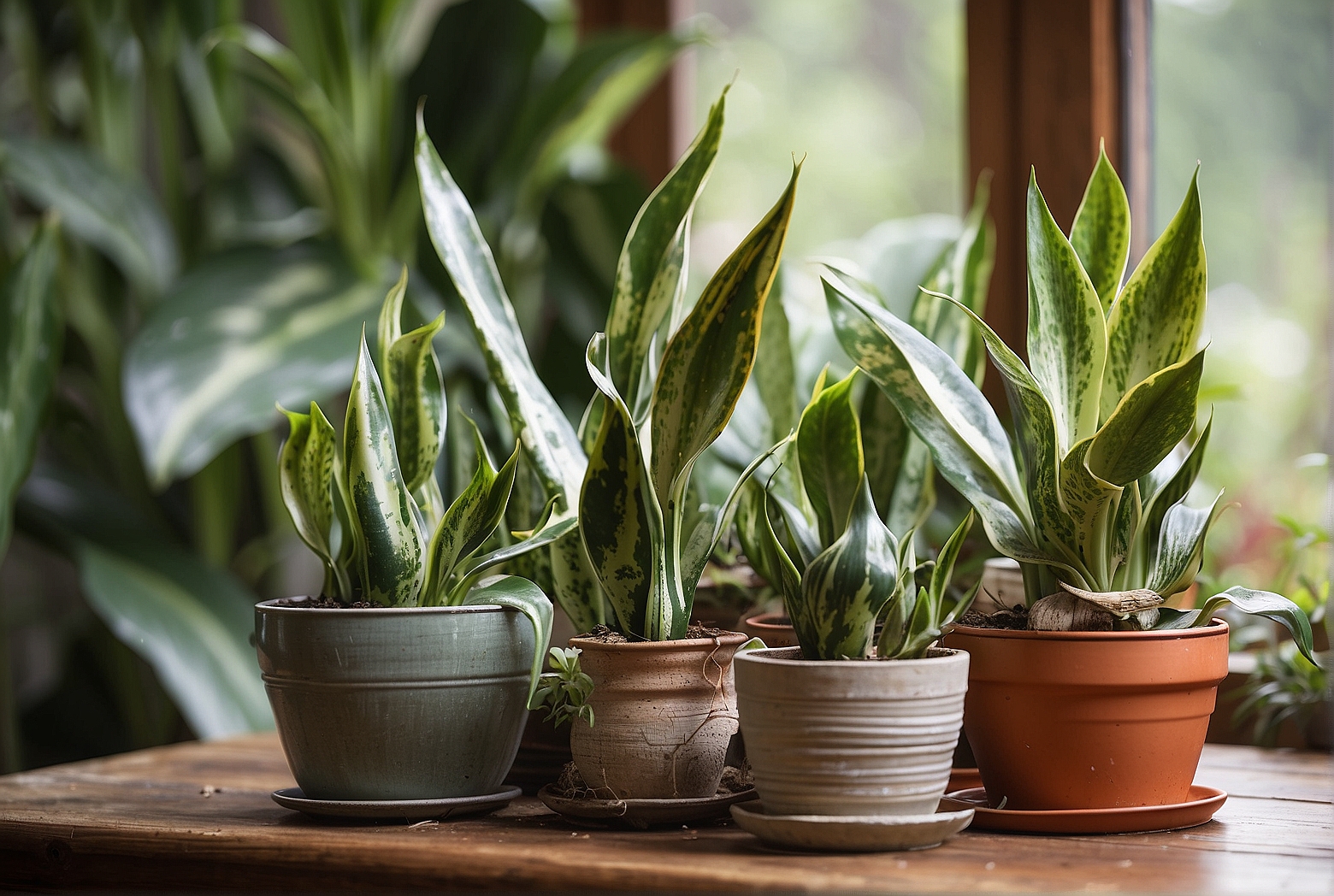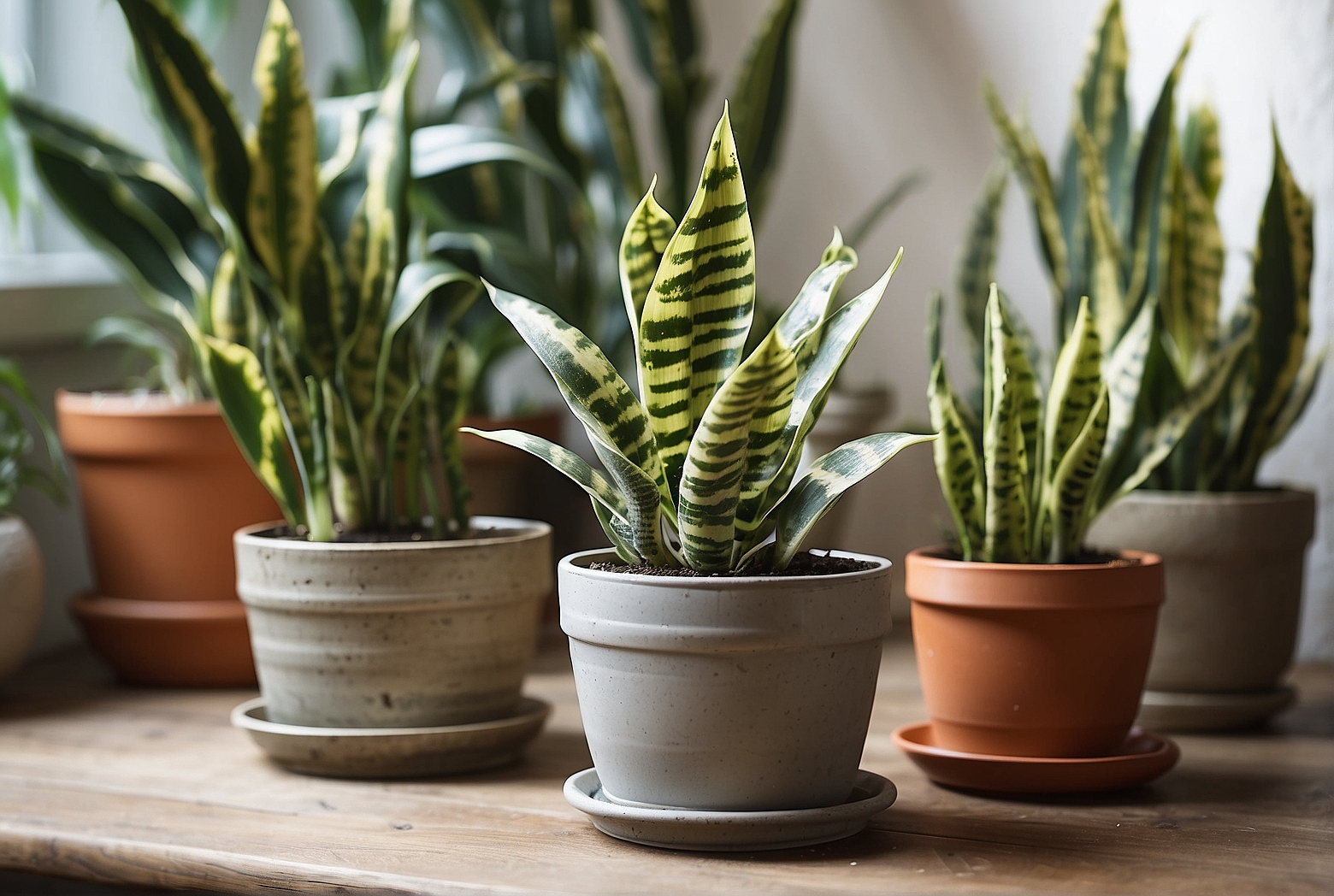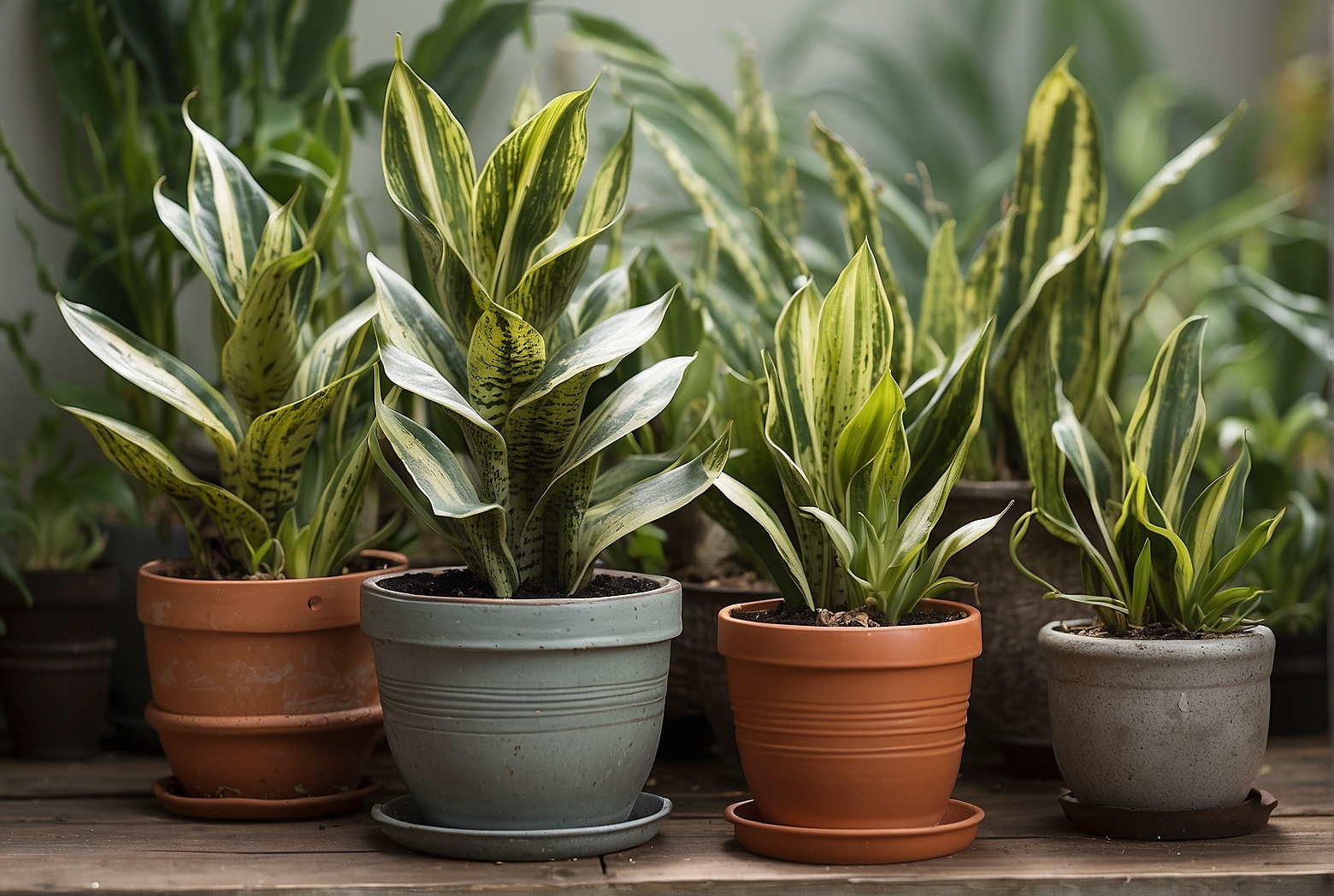Last Updated on April 16, 2024 by Tony Manhart
In the vast world of houseplants, snake plants are known for their resilience and low maintenance. If you’re a proud owner of one, you must be wondering how much water these intriguing leafy creatures actually need to thrive. Well, fret not! This article aims to provide you with a comprehensive watering guide for snake plants, helping you strike the perfect balance between hydration and dry spells. From understanding their water requirements to implementing the right watering techniques, we’ve got you covered. So, let’s dive in and ensure your snake plant stays happy and thriving!
1. Understanding Snake Plants
A brief introduction to snake plants
Snake plants, scientifically known as Sansevieria, are popular indoor plants known for their unique appearance and low-maintenance nature. These plants are native to arid regions of West Africa and have adapted to survive in drought conditions, making them an excellent choice for those who tend to forget to water their plants regularly. Snake plants are characterized by their long, sword-shaped leaves that stand upright, resembling snakes ready to strike.
Types of snake plants
There are several varieties of snake plants, each with its own distinct features. Some common types include the Sansevieria trifasciata, also known as the mother-in-law’s tongue, which has yellow-edged leaves; the Sansevieria cylindrica, with cylindrical leaves; and the Sansevieria bacularis, known for its long, thin, and cylindrical leaves with white stripes. These different species offer a range of options to choose from, allowing you to find the perfect snake plant to suit your preference and home decor.
2. Watering Basics
The importance of watering
Watering is an essential aspect of caring for snake plants and ensuring their overall health and well-being. While snake plants are known for their ability to withstand drought, they still require regular watering to thrive. Proper watering helps deliver essential nutrients to the plant’s roots, promotes healthy growth, and prevents dehydration.

Factors that affect watering
Several factors influence the watering needs of snake plants. Firstly, the size of the plant and its pot plays a role in determining the frequency and amount of water required. Smaller snake plants will require less water compared to larger ones. Secondly, the environmental conditions, such as temperature and humidity, impact the rate at which moisture is lost from the leaves and soil. Hotter and drier climates may necessitate more frequent watering, while cooler and more humid environments might require less.
Determining the watering frequency
To determine the appropriate watering frequency for your snake plant, it’s crucial to assess the moisture level of the soil. Stick your finger about one inch into the soil, and if it feels dry, it’s time to water the plant. However, if the soil is still moist, it indicates that the snake plant doesn’t require watering just yet. It’s important to strike a balance between providing enough water to keep the plant hydrated and avoiding overwatering, which can lead to root rot and other issues.
3. Appropriate Watering Techniques
Choosing the right watering method
When it comes to watering snake plants, it’s crucial to choose the right watering method. One recommended technique is to water the plant from the base, rather than pouring water directly onto the leaves. This method allows the roots to absorb water efficiently and reduces the risk of fungal diseases caused by water sitting on the leaves. You can place the potted snake plant in a shallow tray of water and allow it to soak up moisture through the drainage holes at the bottom of the container.
Ideal water temperature
While snake plants are tolerant of different water temperature ranges, it’s best to water them with room temperature water. Avoid using extremely cold or hot water, as drastic temperature changes can shock the plant’s roots and cause stress. Opting for water that is room temperature ensures a gentle and comfortable watering experience for your snake plant.

Watering container selection
Choosing the right type of container for your snake plant can significantly impact its watering needs and overall health. It is advisable to select a container with drainage holes at the bottom, allowing excess water to escape instead of pooling at the roots. This ensures proper drainage and prevents waterlogged soil, which can lead to root rot. Additionally, selecting a pot that is slightly larger than the plant’s root system allows room for growth and helps avoid water and nutrient deficiencies.
4. Signs of Underwatering
Identifying symptoms of underwatering
Underwatering is a common problem that snake plant owners may encounter. Recognizing the signs of underwatering is crucial in addressing the issue timely. Some common symptoms of underwatering include wilting or drooping leaves, dry and brittle leaves, yellowing or browning of leaves, and slow or stunted growth. If you notice any of these signs, it’s essential to adjust your watering routine to provide adequate moisture to the plant.
Preventing underwatering
To prevent underwatering, make sure to consistently check the soil moisture level and water the snake plant whenever it feels dry. Establishing a regular watering schedule based on the specific needs of your snake plant will help ensure it receives enough water to thrive. Additionally, consider using a moisture meter to precisely monitor the moisture level of the soil, especially if you tend to forget watering or have a busy schedule.
5. Signs of Overwatering
Identifying symptoms of overwatering
Overwatering is another common issue that can be detrimental to the health of snake plants. It’s crucial to identify the signs of overwatering to prevent any further damage. Some telltale signs of overwatering include yellowing or browning of leaves, soft and mushy leaves, a foul odor emanating from the soil, root rot, and the presence of mold or fungus. If you notice any of these symptoms, it’s essential to adjust your watering routine immediately.
Preventing overwatering
To prevent overwatering, ensure that the soil has dried out sufficiently before watering the snake plant again. It’s crucial to maintain a balance between providing enough moisture and allowing the soil to dry out between waterings. Providing proper drainage by using pots with drainage holes and avoiding over-packing the soil in the pot can also help prevent overwatering.
6. Watering Schedule
Establishing a watering schedule
Establishing a watering schedule for your snake plant is an effective way to ensure it receives consistent moisture without the risk of overwatering or underwatering. As a general rule of thumb, snake plants typically need to be watered every 1-2 weeks, depending on environmental factors and the size of the plant. However, it’s important to adjust the schedule based on the specific needs of your snake plant.
Seasonal watering variations
During the hotter summer months, when the snake plant’s growth is more active, you may need to increase the frequency of watering. Conversely, in colder winter months when the plant’s growth slows down, it’s important to reduce the watering frequency. Monitoring the soil moisture and adjusting the watering schedule accordingly will help ensure the well-being of your snake plant throughout different seasons.
7. Watering Amount
Determining the right amount of water
Determining the right amount of water for your snake plant is crucial in maintaining its health and vitality. While underwatering can cause dehydration and stunted growth, overwatering can lead to root rot and other issues. As a general guideline, water your snake plant until you see water flowing out of the drainage holes at the bottom of the pot. This ensures that the entire root system receives sufficient moisture without overloading the soil with excess water.
Potential challenges with underwatering and overwatering
Both underwatering and overwatering can pose challenges for snake plant owners. Underwatering can result in stress, wilting, and reduced growth, while overwatering can lead to root rot, leaf discoloration, and fungal diseases. Maintaining a balanced watering routine and being attentive to the needs of your snake plant will help overcome these challenges and ensure its longevity.
8. Water Quality
Understanding the importance of water quality
Water quality is crucial for the overall health of your snake plant. While snake plants are relatively tolerant of different water sources, certain contaminants and chemicals present in tap water can have a negative impact on their well-being. Chlorine, fluorine, and other minerals can accumulate in the soil over time, affecting the plant’s ability to absorb nutrients properly. Therefore, it’s important to consider the quality of water used for watering your snake plant.
Choosing the right water source
If your tap water has high chlorine or fluoride levels, it’s advisable to use filtered or distilled water for watering your snake plant. Using rainwater collected in a clean container is another excellent option, as it is free from chemicals and naturally pure. Avoid using softened water, as the excessive salts can be harmful to the plant. By selecting the right water source, you can provide your snake plant with the optimal growing conditions it needs to thrive.
9. Tips for Successful Watering
Monitoring soil moisture
Regularly monitoring the moisture level of the soil is essential in maintaining successful watering practices. Using a moisture meter or simply testing the soil with your finger can help you determine when it’s time to water your snake plant. Remember that snake plants prefer slightly dry conditions, so allowing the soil to dry out between waterings is crucial to prevent overwatering.
Proper drainage
Ensuring proper drainage is vital in preventing water from accumulating around the roots and causing root rot. Selecting pots with drainage holes and using well-draining soil can help promote adequate drainage. Additionally, avoid using saucers or trays that retain excess water beneath the pot. If your snake plant is in a decorative pot without drainage holes, consider placing a layer of gravel or small pebbles at the bottom, creating a space for excess water to collect without saturating the roots.
Humidity considerations
While snake plants can tolerate a wide range of humidity levels, they prefer average to low humidity levels. High humidity environments can increase the risk of fungal diseases and affect the overall health of the plant. If you live in a particularly humid climate or have a high humidity area in your home, it’s important to monitor the soil moisture more closely and adjust the watering frequency accordingly.
10. Troubleshooting Watering Issues
Common watering problems
Watering-related issues can arise even when you have a thorough understanding of snake plant care. Some common problems include overwatering or underwatering due to inconsistent watering routines, using improper watering techniques, or neglecting to monitor the soil moisture level. Additionally, factors like improper drainage and poor water quality can also contribute to watering problems.
Solutions for watering-related issues
To address watering issues, start by adjusting your watering routine to provide adequate moisture while allowing the soil to dry out between waterings. Ensure that your snake plant is potted in a container with proper drainage to prevent waterlogged soil. If you suspect poor water quality, consider using filtered or distilled water to provide your plant with clean and beneficial moisture. By implementing these solutions, you can overcome watering-related challenges and enjoy a thriving snake plant.
In conclusion, understanding the watering needs of snake plants is crucial for their overall health and longevity. By determining the appropriate watering frequency, choosing the right watering method, monitoring soil moisture, and considering factors such as water quality and humidity, you can provide your snake plant with optimal conditions for growth. Through proper watering techniques and attentive care, your snake plant will continue to thrive as a beautiful and low-maintenance addition to your indoor space.
Tony Manhart is a passionate gardener who has been tending to gardens for over 20 years. He takes pride in creating beautiful outdoor spaces with plants, trees, and shrubs that can thrive in any environment. He loves to share his knowledge with others and has taught classes on gardening basics and advanced techniques. He is committed to sustainability, using natural and organic methods to create and maintain gardens. He also works with local organizations to create green spaces for communities. When he’s not gardening, Tony enjoys hiking, reading, and spending time with his family.


